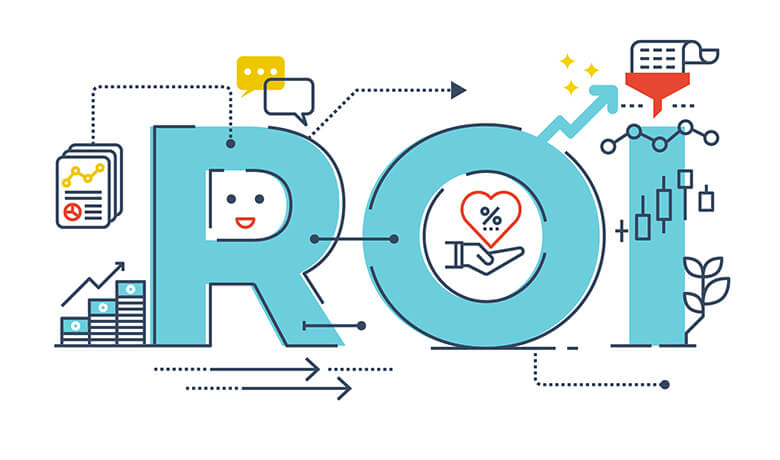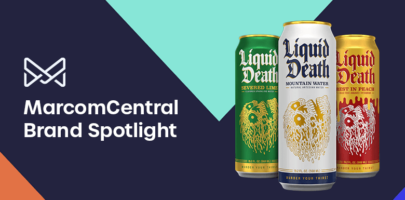Get news, updates, and insights delivered straight to your inbox.
Learn from the Best: How to Implement Marketing Asset Management for Maximum ROI

Four out of five organizations today struggle with managing online and offline marketing assets. As businesses work to manage the chaos of multi-channel content production and distribution, many are turning to marketing technology to get the job done.
In response, Marketing Asset Management (MAM) and Marketing Resource Management (MRM) tools like MarcomCentral have become critical to a modern marketing technology stack, enabling teams to control their brand and distribute any kind of asset – whenever and however it’s needed.
Related asset: Busting the 5 Myths about Marketing Asset Management, Digital Asset Management, and Project Management.
This technology allows an organization to increase marketing productivity, drive more revenue, and increase content effectiveness through personalization. What’s more, it’s been found to reduce local agency costs by as much as 75% while generating 2-3 X higher local revenue once it’s been implemented.
But, realizing the value of powerful Marketing Asset Management and Marketing Resource Management technology is not as easy as signing a contract, and loading up your assets into a portal. In this article, we’ll answer a common question: What does it really take to successfully implement Marketing Asset Management company wide?
Gleanster Research’s 2014 report on Marketing Resource Management is an excellent guide to realizing ROI from this category of marketing technology. Their research identified what top performing organizations need in terms of processes, organizational considerations, and tactics to drive maximum value from a Marketing Asset Management technology initiative.
Here’s what Gleanster found is important for a successful implementation and use of Marketing Resource Management/Marketing Asset Management tools:
- Integration with other systems
96% of top performers said integration with other systems was the #1 most important value driver for Marketing Resource Management ROI.
There’s no reason to duplicate data, whether from Customer Relationship Management (CRM), Digital Asset Management (DAM), or campaign management tools. If information about your marketing assets resides on these other systems, use available APIs to pull that data into your Marketing Asset Management/Marketing Resource Management platform.
By integrating with e-procurement applications such as those from Ariba, Commerce-One, SAP, and PeopleSoft, or Enterprise Resource Planning (ERP) tools, users of Marketing Asset Management technology can use existing systems to place orders for materials (even versioned and variable documents.)
These types of integrations are critical to improving the adoption of Marketing Asset Management for a number of reasons:
- No need to learn new software. Instead, users can access marketing assets through the applications they know and love, with a familiar look and feel.
- Does not require additional log in or approval workflows, instead uses access, security controls, and approval processes inherent in existing enterprise applications
- Streamlines accounting and buying process by adapting to the needs of e-procurement and accounting systems
As Marketing Asset Management tools serve the needs of various internal stakeholders, from Marketing, to Channel Sales, to Finance, to IT, it’s important to select a system that will integrate with other back-office systems.
- Ongoing training and development
Training is not a “one and done” initiative. Gleanster found that companies often invest heavily in training when a system is first deployed, but then fail to continue training after the initial push. This can cause a steady decline in system effectiveness, as new users are not taught the correct procedures or system shortcuts.
As for experienced employees, even they should get regular retraining both to learn about new features, and to learn advanced techniques that were not covered in the initial training. Continuous training also helps to ensure that standard procedures remain consistent throughout the organization, instead of fragmenting into variations developed by local groups.
Top performing organizations found this to be critical as well, 78% reporting ongoing training and development to be an important value driver for this technology.
Didier Bonnet, coauthor of Leading Digital and Global Practice Leader at Capgemini Consulting recently advised organizations to customize their training in a Harvard Business Review article. He suggests that your training efforts should reflect the variety among your employees familiarity with, and interest in, digital technology.
“Some employees might prefer an online training session; others might need a bit more hand holding and support in the form of a personal coach.”
- System ease of use
MarcomCentral was rated “best” among vendors for “ease of use” and “ease of deployment” in a comparison of user experience with a rating of 4.6 out of 5 and 4.7 out of 5 respectively. We’re proud of that ranking, as we believe ease of use is critical to the ultimate adoption of any enterprise technology.
Gleansight research underscored this belief, with 68% of companies reporting system ease of use to be an important value driver for Marketing Resource Management ROI.
“If your goal is a high adoption rate within the organization, make sure you’re choosing the most approachable, most intuitive system possible,” – Michael C. Mankins, Partner, Bain & Company.
- Marketing operations center of excellence
In very large organizations, an internal resource to help different groups of marketers with their own local deployments can be a helpful addition. This Center of Excellence (or COE) provides expertise similar to outside resources, but is more familiar with the company’s internal processes, needs and culture.
Gartner recommends a COE to concentrate existing expertise and resources to sustain world-class performance and value with four key elements:
- Focus on a tight scope defined around a specific capability (e.g. marketing asset management)
- Physical or virtual location
- Optimize and leverage internal resources
- Push beyond standard performance norms and deliver incremental value to the organization.
Benefits of establishing a marketing operations center of excellence include:
- Consistency throughout the marketing organization
- Easier cooperation throughout disparate teams
- Specialized knowledge and capabilities related to marketing technology implementation
The goal of a COE should be to drive toward excellence in a medium or channel, which is why it’s become a structural archetype within marketing organizations, and can be helpful to those looking to optimize their investment in Marketing Asset Management.
- Executive-level champions
Gleanster found that employees are often reluctant to change their existing processes. (Let’s be honest, nobody likes change.) They especially feel this way if their existing processes seem to be working well. Management support is needed to make clear that change is “not optional.”
From the Harvard Business Review: “Persuading your team to adopt a new technology requires putting forth a compelling vision for what the technology is and what it’s going to do… First, you must demonstrate the new service offers economic and rational benefits for the organization and the individual.” Help employees understand what’s in it for them. The best argument for any new technology is “that it will make your life better,” said Mankins.
Hint: Keep a list handy of the benefits of Marketing Asset Management, including:
- Decreasing marketing costs
- Optimizing marketing spend across channels
- Managing brand consistency
- Improving marketing cycle time
- Standardize repetitive marketing processes
- Streamlining workflow with internal stakeholders
Executive-level champions are important especially for Marketing Asset Management/Marketing Resource Management processes that cross organizational lines, says Gleanster, since department leaders may not be willing to cooperate unless their common boss tells them to.
- Phase the implementation
According to Gleanster, “Changing everything at once is a recipe for disaster.”
Set phases for your implementation, so that the scope of each step is limited to allow foundation for future change. Gleanster recommends starting with a small number of heavy users who are thoroughly trained on the system, and then deploying a sequence of changes fairly quickly.
Realizing full potential.
45% of companies have the right technology in place, but aren’t using them to their potential.
Successful implementation of Marketing Asset Management begins with selection of the right system – one that’s easy to use and integrates with other technologies. The journey to ROI continues with proper internal expectation setting and training, and relies on a phased deployment approach to ensure the new system is implemented appropriately, and used as intended. A center of excellence can ensure best practices are followed, and executive support carries the momentum of top-down commitment.
At the end of the day, Marketing Asset Management technology is powerful, but requires a commitment to change to deliver maximum return. The potential savings in cost, improvements in efficiency, and increase in revenue, however, make it well worth the effort.


